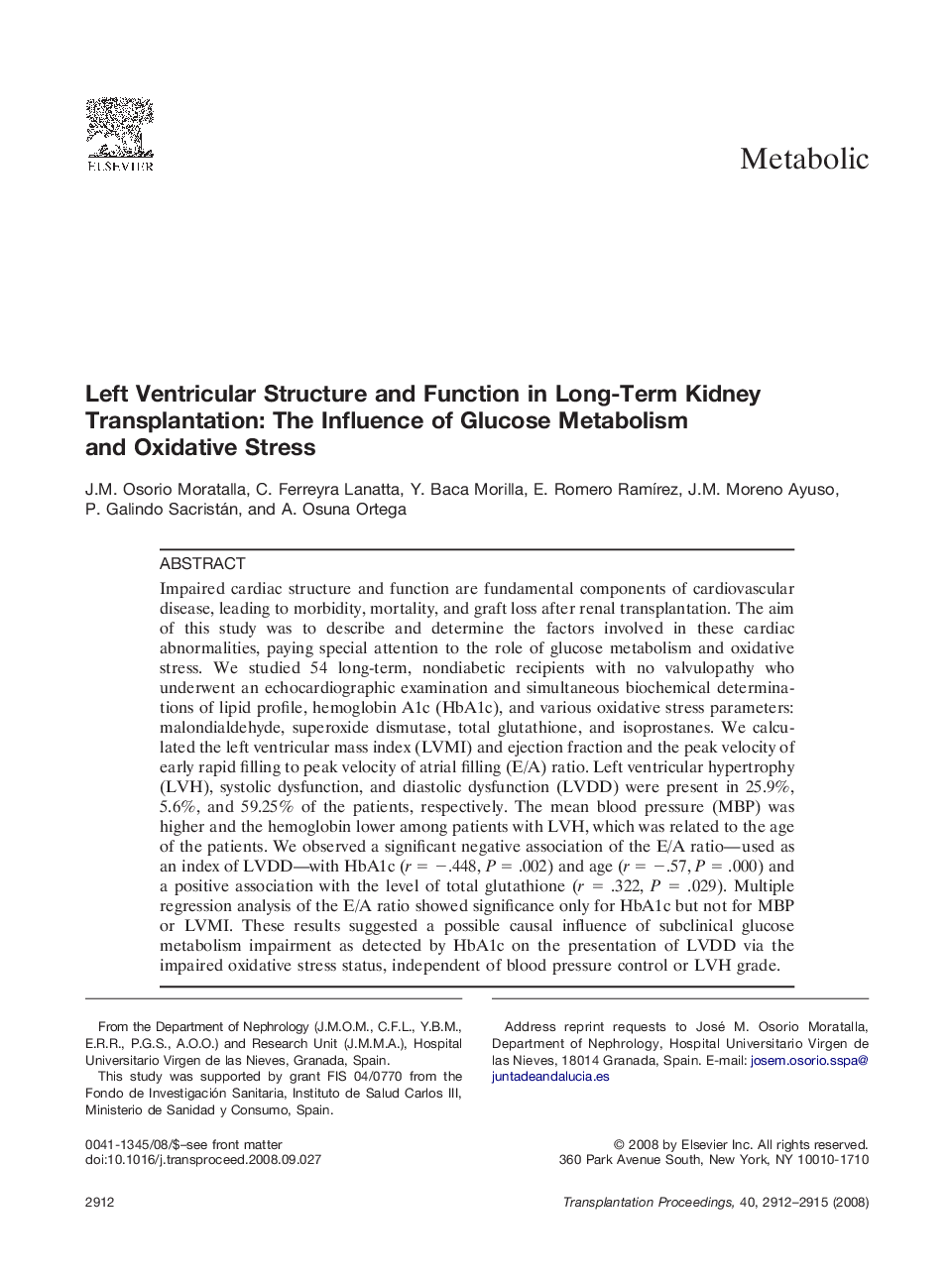| Article ID | Journal | Published Year | Pages | File Type |
|---|---|---|---|---|
| 4261303 | Transplantation Proceedings | 2008 | 4 Pages |
Impaired cardiac structure and function are fundamental components of cardiovascular disease, leading to morbidity, mortality, and graft loss after renal transplantation. The aim of this study was to describe and determine the factors involved in these cardiac abnormalities, paying special attention to the role of glucose metabolism and oxidative stress. We studied 54 long-term, nondiabetic recipients with no valvulopathy who underwent an echocardiographic examination and simultaneous biochemical determinations of lipid profile, hemoglobin A1c (HbA1c), and various oxidative stress parameters: malondialdehyde, superoxide dismutase, total glutathione, and isoprostanes. We calculated the left ventricular mass index (LVMI) and ejection fraction and the peak velocity of early rapid filling to peak velocity of atrial filling (E/A) ratio. Left ventricular hypertrophy (LVH), systolic dysfunction, and diastolic dysfunction (LVDD) were present in 25.9%, 5.6%, and 59.25% of the patients, respectively. The mean blood pressure (MBP) was higher and the hemoglobin lower among patients with LVH, which was related to the age of the patients. We observed a significant negative association of the E/A ratio—used as an index of LVDD—with HbA1c (r = −.448, P = .002) and age (r = −.57, P = .000) and a positive association with the level of total glutathione (r = .322, P = .029). Multiple regression analysis of the E/A ratio showed significance only for HbA1c but not for MBP or LVMI. These results suggested a possible causal influence of subclinical glucose metabolism impairment as detected by HbA1c on the presentation of LVDD via the impaired oxidative stress status, independent of blood pressure control or LVH grade.
